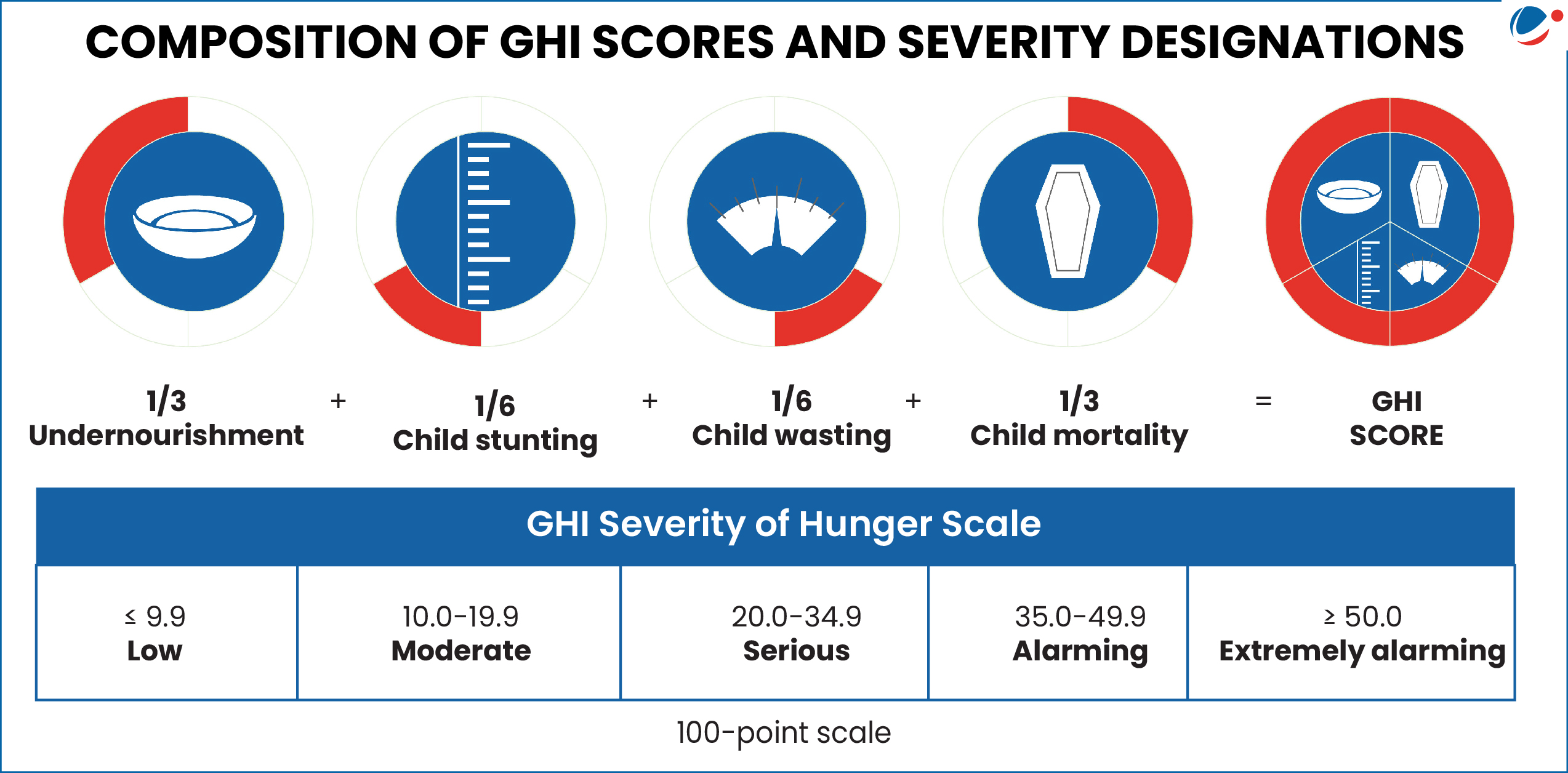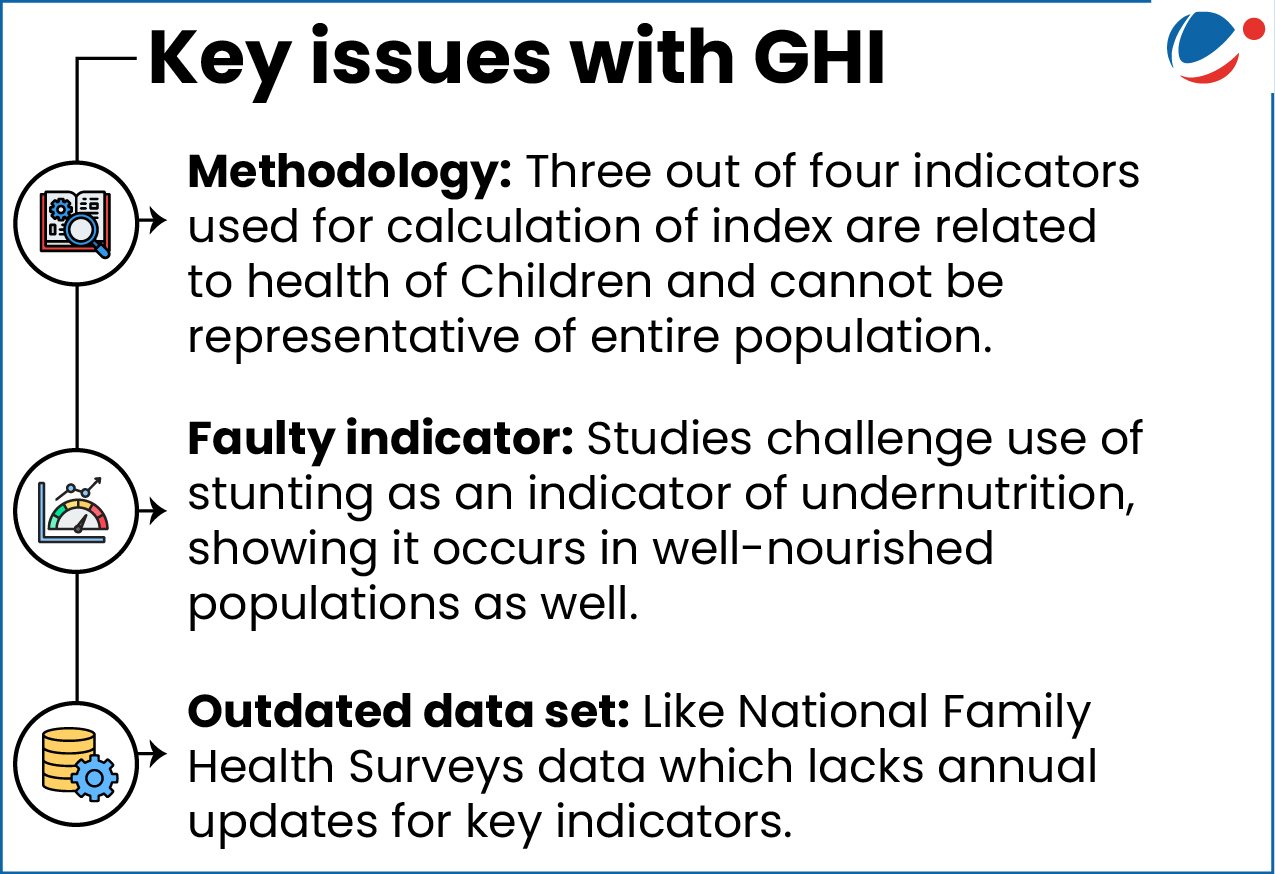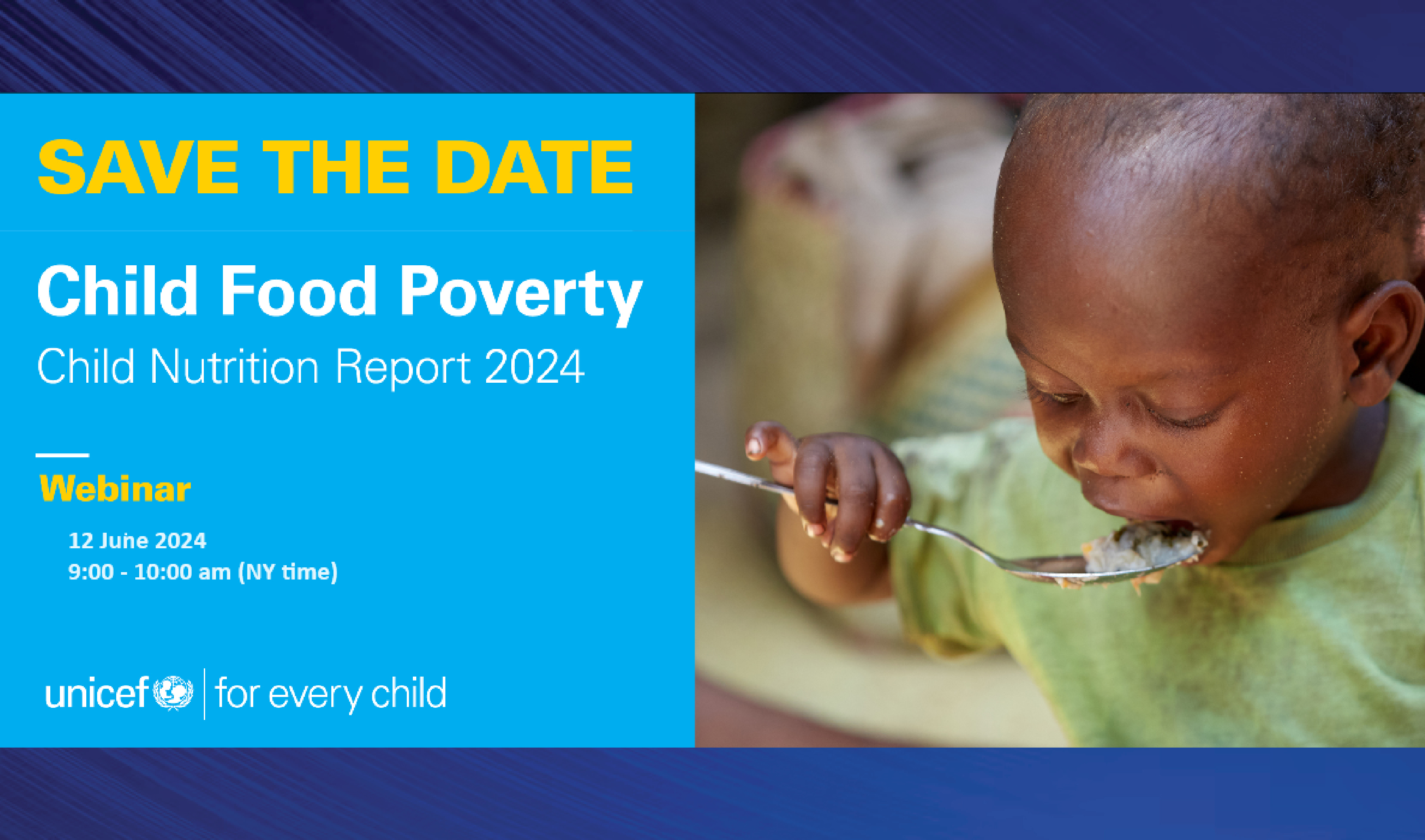Why in the news?
Global Hunger Index (GHI), 2025 ranks India under 'serious' category.
About Global Hunger Index (GHI)
- Index has been released by Irish humanitarian organization 'Concern Worldwide' and German aid agency 'Welthungerhilfe' (with FAO, UNICEF, WHO, IFPRI).
- Purpose of Index is to track hunger globally using nutrition & mortality indicators.
- Each country's GHI score is calculated based on a formula (See image) that combines four indicators:
- Undernourishment (Insufficient caloric intake);
- Child stunting (Children with low height under age 5);
- Child wasting: (Children with low weight for their height under age 5);
- Child mortality: (Children who die before their fifth birthday).

Key Findings of the report
- India Related Findings:
- India's Position: India is ranked 102nd among the 123 countries assessed with a GHI score of 25.8, which is classified as serious.
- Child Nutrition Crisis: 1 in 3 Indian children is stunted. Undernourishment affects 172 million people, 13.5 million more than in 2016.

- Global Findings:
- Achieving Zero Hunger: At current rates, SDG-2 (Zero Hunger by 2030) is out of reach. At least 56 countries are not on track to achieve even low hunger by 2030.
- Global Status: 2025 global GHI score is 18.3 (moderate category), showing only marginal improvement from 19.0 in 2016.
- Regional Disparities: Serious hunger in Africa, South Asia, and alarming hunger in 7 countries, like Somalia (worst), DRC, and South Sudan, etc.
- Drivers of Rising Hunger:
- Globally: Armed conflicts, climate shocks, economic fragility, and declining political and financial commitment.
- India: Intergenerational Cycle of malnutrition, reduced productivity, and Poverty; Persistent poor maternal nutrition and uneven access to child-health service; High Chronic Malnutrition; Poverty and Inequality; etc.
Consequences of Hunger
- Higher child mortality: Under-nutrition is responsible for 45% of deaths among children under the age of five.
- Lower productivity: Hunger reduces physical capacity and cognitive efficiency, lowering workforce productivity and national economic growth.
- Rising healthcare burden: Malnutrition increases illness, putting pressure on public health systems and raising preventable healthcare costs.
- Other Consequences: Poor learning outcomes, Violation of Human Right to adequate food, Famine and Catastrophe & Deepening inequalities etc.
Initiatives taken for Tackling Hunger in India
|
Way Forward
- Ensure political commitment and good governance: Treat food security as a right, not charity; strengthen accountability, coordination, and transparent monitoring.
- Increase and diversify financing: Reverse recent funding cuts, ensure timely and flexible financing, and align aid with national priorities through results-based mechanisms.
- Build resilient and inclusive food systems: Promote climate-resilient agriculture, restore ecosystems, secure land and water rights, empower smallholders and women, and integrate nutrition with agriculture.
- Adopt multisectoral, locally led strategies: Link hunger reduction with health, education, WASH and social protection; empower local governments and communities to design solutions.
- Other Ways for Zero Hunger: Strengthen social safety nets, connect farmers to markets, reduce food loss, and prevent maternal-child malnutrition.
Conclusion
Hunger is not merely a lack of food, but a result of poverty, conflict, climate shocks, and policy gaps. Addressing it requires resilient food systems, targeted nutrition support, empowered communities, and global cooperation to ensure the right to food for all.






